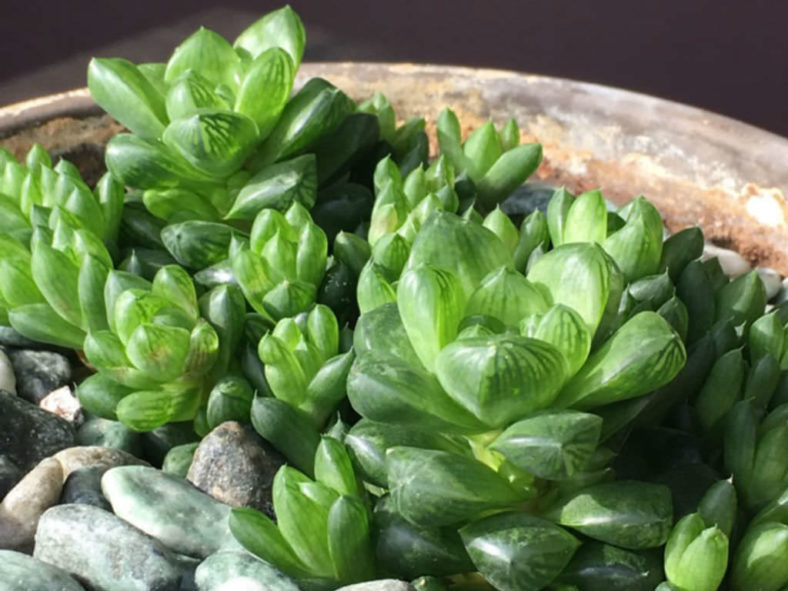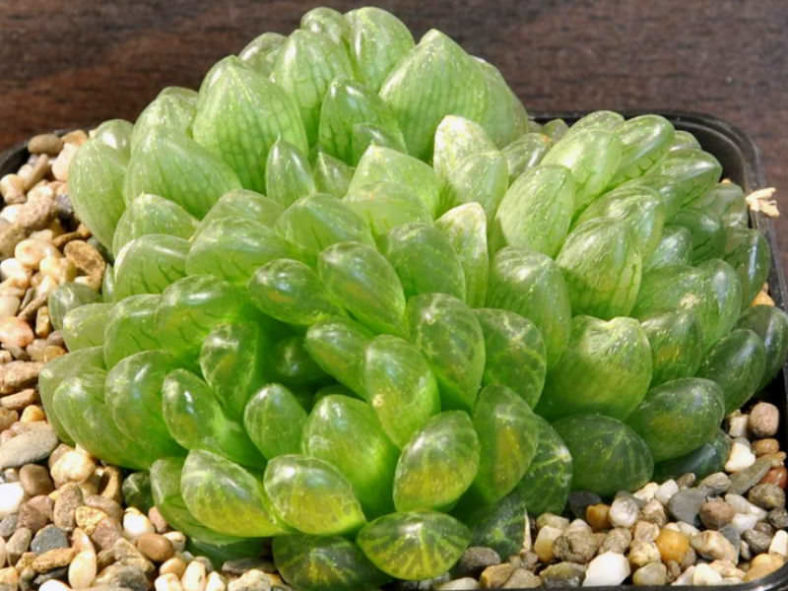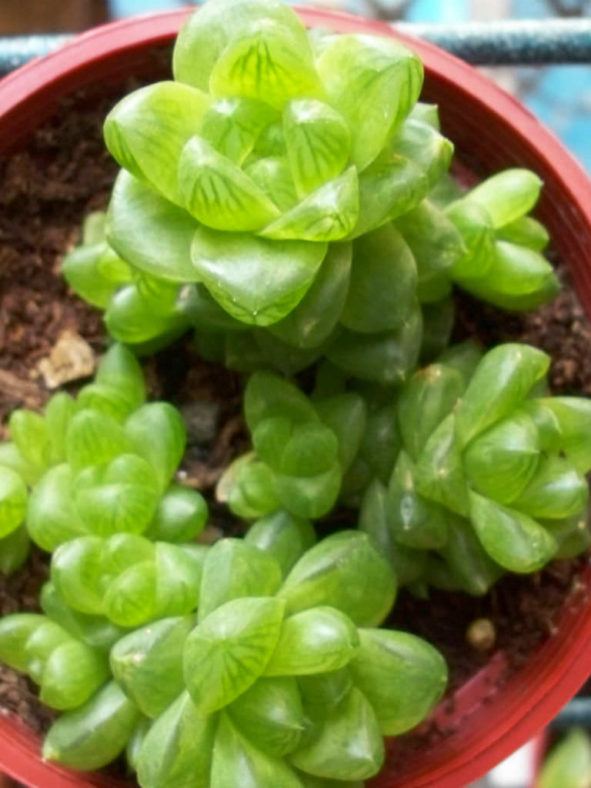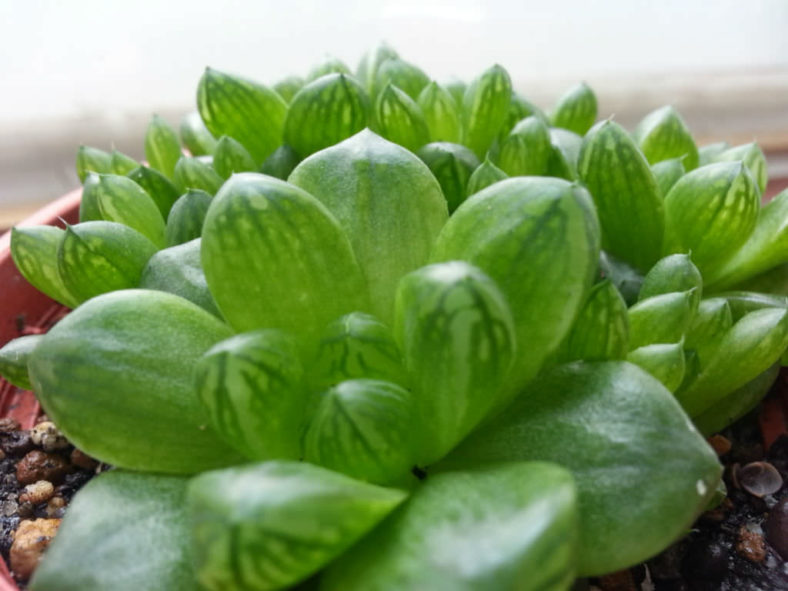Scientific Name
Haworthia cymbiformis var. obtusa (Haw.) Baker
Synonym(s)
Haworthia cymbiformis var. umbraticola, Haworthia hilliana, Haworthia obtusa, Haworthia umbraticola, Haworthia umbraticola var. hilliana
Scientific Classification
Family: Asphodelaceae
Subfamily: Asphodeloideae
Tribe: Aloeae
Genus: Haworthia
Etymology
The varietal epithet "obtusa (ob-TOO-suh)" means "blunt, dull, obtuse" and refers to the blunt apex of the leaves.
Origin
Haworthia cymbiformis var. obtusa is native to South Africa (Eastern Cape).
Description
Haworthia cymbiformis var. obtusa is a small succulent that forms rosettes of bright green leaves with darker longitudinal stripes and transparent tips. The rosettes can reach up to 4 inches (10 cm) in diameter and offsets at their base, forming large clumps. The leaves are thick, fleshy, smooth, and boat-shaped.
The white to greenish-white flowers with pinkish-brown veins appear on slender stalks that can grow up to 8 inches (20 cm) tall from spring to summer.
This variety is similar to Haworthia cooperi var. truncata but has a slightly different leaf shape and less transparent leaf tips.

How to Grow and Care for Haworthia cymbiformis var. obtusa
Light: Although some species can grow in full sun, most Haworthias are adapted to thrive in partial shade. Place the potted H. cymbiformis var. obtusa in a bright area with some protection from the hottest rays of the day.
Soil: All Haworthias do not like their roots to remain wet for prolonged periods, so their potting soil should be well-drained. Use a commercial succulent potting mix, or make your own.
Hardiness: Haworthias like warmer temperatures in the summer but cool in the winter. However, they do not like being too cold. H. cymbiformis var. obtusa can withstand temperatures as low as 30 to 50 °F (-1.1 to 10 °C), USDA hardiness zones 10a to 11b.
Watering: In spring and fall, when the growth is most active, water Haworthias thoroughly, then wait until the top of the soil dries out before watering again. Water your plants less during the winter when their growth slows down significantly. During the hottest summer months, when Haworthias are mostly dormant, water it just enough to keep the leaves from shriveling.
Fertilizing: Haworthias do not require much fertilizer, but fertilizing is a good idea for optimum growth. Feed only with a dilute fertilizer and only during the active growing season.
Repotting: These succulents are generally slow-growing and can stay in the same pot for years. However, for best health, H. cymbiformis var. obtusa should be repotted into fresh soil every two to three years.
Propagation: Vegetative propagation, especially by offsets, is the quickest and most common method of propagating Haworthias. They can also be propagated by leaves and seeds. Remove the offsets when they have started developing their own roots. Sow seeds in spring or fall in a well-draining soil mix.
Learn more at How to Grow and Care for Haworthia.
Toxicity of Haworthia cymbiformis var. obtusa
Haworthia species are generally non-toxic to humans and animals.
Links
- Back to genus Haworthia
- Succupedia: Browse succulents by Scientific Name, Common Name, Genus, Family, USDA Hardiness Zone, Origin, or cacti by Genus
Photo Gallery
Click on a photo to see a larger version.


